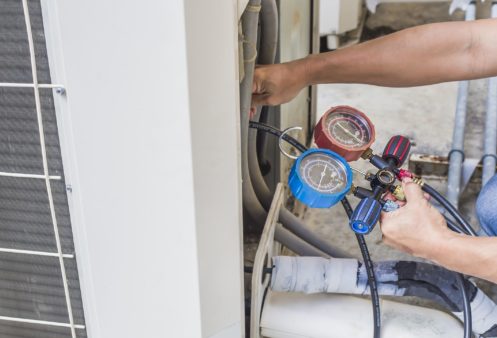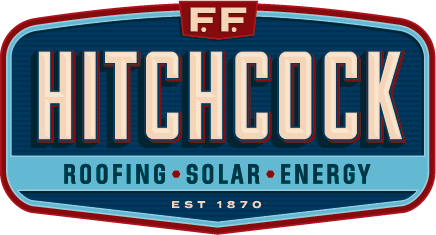Consumers all throughout the nation are looking for ways to reduce their carbon footprint. Not only are they concerned about the rising costs of energy, but they’re also becoming increasingly aware of how their day-to-day activities are affecting the natural environment.
With the goal of preserving the earth, its atmosphere, and the countless plant and animal species that exist, the Environmental Protection Agency (EPA) has implemented an ambitious, twofold plan to phase out the AC refrigerant known as R22. If you’re looking for an easy way to limit your impact on the environment, you can upgrade the air conditioner in your Cheshire, Connecticut home to an AC model that uses R401A. Following is everything you need to know about the differences between these two refrigerants.
Why Is R22 Bad for the Environment?
Best-known by its branded name, Freon, R22 was the standard refrigerant for residential air conditioning systems for many years. Unfortunately, researchers discovered that R22 is an ozone-depleting substance (ODS). It gradually depletes the earth’s protective atmosphere that absorbs the sun’s harmful UV rays.
To protect the earth’s ozone layer, limiting the use of R22 and other substances like it is essential. R22 is a hydrochlorofluorocarbon (HCFC). Within the past several decades, many nations have banded together to remove HCFCs from both the public and private sectors by the year 2030. Freon is among the very first ODS to be eliminated from widespread use. In the United States, the EPA has worked carefully to limit the financial effects of removing R22 from circulation so that companies and consumers are not overwhelmed by this important transition.
Does R401A Deplete the Ozone Layer?
Although R401A functions much like R22 by absorbing indoor heat and releasing it outside, its ability to support an air conditioner’s cooling cycle without causing significant harm to the natural environment makes it a far preferable choice. R401A, or Puron, is a hydrofluorocarbon (HFC). HFCs are non-ozone-depleting substances. As such, Puron can be safely used as a residential AC refrigerant by consumers all throughout the nation.
What Is the Environmental Impact of R401A?
R401A doesn’t deplete the ozone and it also has a higher level of overall efficacy. When compared to R22, Puron has the ability to absorb and release far more heat throughout the cooling cycle. However, R401A is not without its drawbacks. For instance, it is known to produce a modest amount of greenhouse gases. Greenhouse gases do contribute to global warming.
Even as many households are switching to R401A, researchers are still looking for AC refrigerants that have absolutely no impact on the environment. Currently, there are several single-ingredient refrigerants that are being investigated. These single-ingredient alternatives to R401A do not create greenhouse gases and they are non-ozone-depleting. Unfortunately, it will be many years before these products are brought to market and far longer before they’re implemented in any widespread fashion. For several decades to come, R401A will remain the industry standard.
Why R401A Is Better for AC Systems
Puron’s ability to absorb and release more heat during the cooling cycle greatly limits the amount of stress that air conditioner compressors are subjected to. Using R401A reduces the likelihood of having your AC compressor overheat. It also diminishes the risk of having this important component burn out.
Another important difference between R22 and R401A is that R22 air conditioners use a basic mineral oil lubricant for their compressors. Comparatively, R401A air conditioners have a high-quality synthetic oil that lubricates their compressors. Thus, in addition to being subjected to less heat, the compressors in R401A air conditioners also have the benefit of better lubrication and smoother operation. This extends their lifespan and helps consumers keep their replacement and repair costs low.
Understanding the EPA Phase-out of R22
Even knowing the many benefits that switching to R401A provides, many homeowners are still reticent to upgrade their air conditioners. However, it’s important to note that making this transition is inevitable. As per the EPA’s twofold plan for phasing R22 out, AC manufacturers are no longer legally able to design residential cooling equipment that relies on Freon. As of 2010, no new R22 air conditioners have been produced.
Even though there are still a number of households that continue to use Freon-reliant air conditioners, the availability of this refrigerant is steadily decreasing. As of 2020, it is no longer lawful to import this refrigerant and it’s also illegal to produce it within the U.S. The consumers and companies who use Freon are currently relying upon a finite supply. As this supply is used up, the cost of having an R22 air conditioner recharged with Freon is going up as well.
There’s also the fact that HVAC technicians are becoming increasingly unfamiliar with R22 air conditioners. R22 ACs are considered outdated and obsolete. New heating technicians and cooling technicians are receiving less training on installing, repairing, and maintaining these models. Just as homeowners are having a difficult time finding Freon itself, many are also struggling to find qualified HVAC technicians who can service their aging equipment.
R22 Air Conditioners Are Getting on in Years
Given that no new R22 air conditioners have been produced since 2010, most Freon-reliant models still in circulation are well-advanced in age. Many of these models have already reached the end of their lifespans, and most have lost half or more of their efficiency. Not only does it cost more to recharge an older R22 air conditioner, but it also costs more to use it. Having this outdated equipment upgraded will give homeowners the benefit of lower energy bills, fewer repair costs, and greater ease in having refrigerant recharge services performed.

Why R401A Cannot Be Used in R22 Air Conditioners
Unfortunately, making the change to R401A isn’t as easy as putting this new refrigerant into an old air conditioner. The differences between R22 and R401A extend to the pressure levels at which they operate. Comparatively, R401A operates at a very high pressure level and R22 operates at a low one. Due to this fact, the equipment that’s built to handle Freon cannot stand up to the extra pressure and stress of using Puron. Putting Puron into your current R22 air conditioner would likely cause many of its internal components to rupture or collapse.
Although it is possible to retrofit an R22 AC to use Puron, the costs of doing so are quite high. Moreover, these projects aren’t assured of success. They require homeowners to replace all of the major components in their air conditioners. This retrofit will void all relevant warranties and other consumer protections. Even with extensive modifications, using Puron in a Freon-reliant air conditioner isn’t guaranteed to be safe, efficient, or effective. Upgrading to a modern R401A air conditioner is by far the most sensible choice.
F.F. Hitchcock Plumbing, Heating & Cooling has been delivering cutting-edge home comfort solutions since 1870. Proudly serving Cheshire, Connecticut and the surrounding areas, we offer air conditioning installation, plumbing services, heating installation, maintenance plans, and repair services. We also offer reliable fuel oil delivery. If you have yet to make the switch from R22 to R401A, we can help. Call us today to find out more.

Frequently Asked Questions








